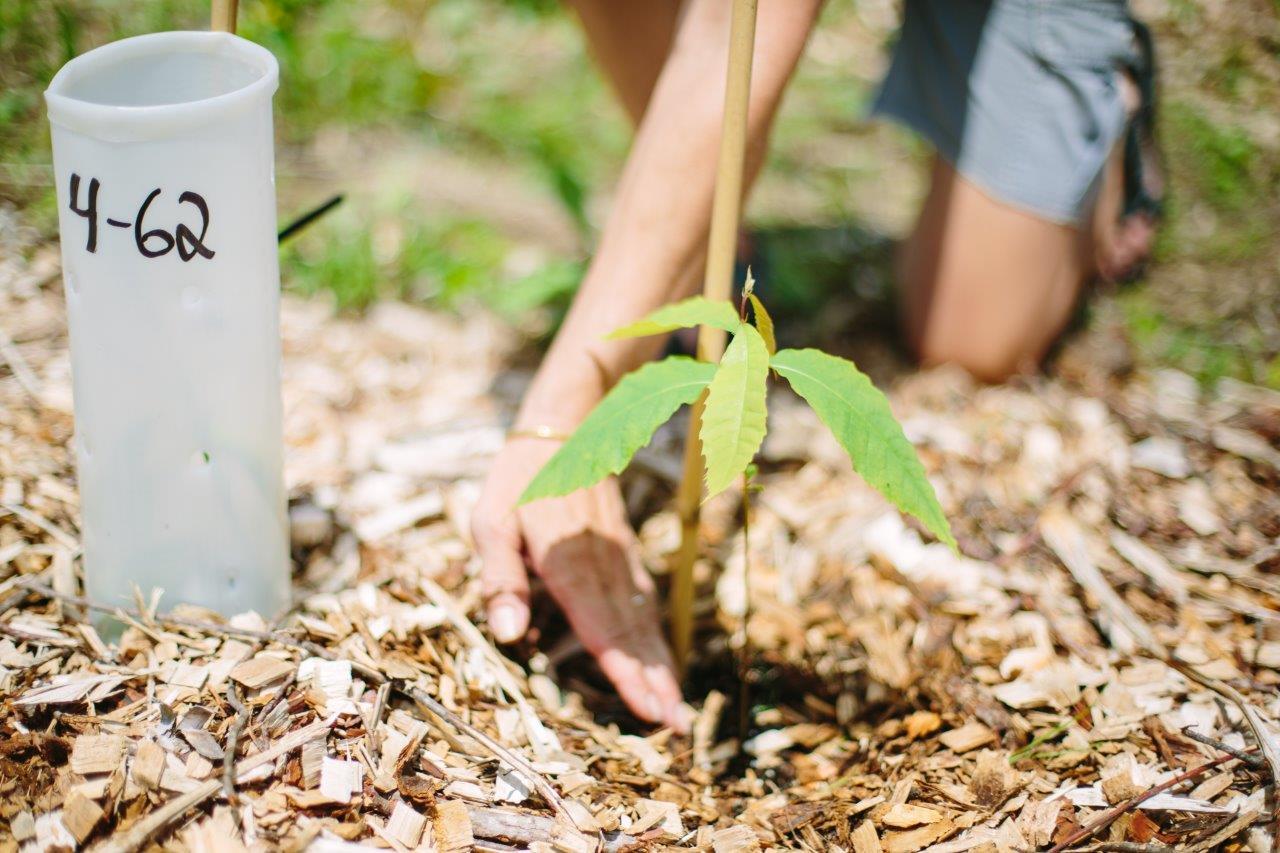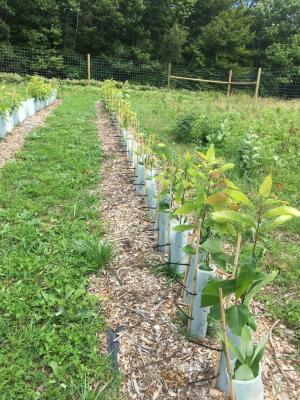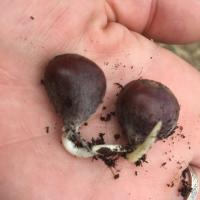
Your generous donation will help the Forest Society to plant and nurture American chestnut seedlings in an effort to return this heritage species to our forests. Photo by Emily Lord
The American chestnut tree once dominated the eastern United States. Fast-growing, straight-grained and rot-resistant, the tree provided the wood that built early America, from colonial log cabins to railroad ties to flooring and lumber. Producing abundant nuts, it was a food source for settlers and livestock alike, and later became the quintessential street food – roasted and sold on the streets of New York.

Now, the Forest Society is working to change the fate of the American chestnut in New Hampshire. In partnership with the Vermont–New Hampshire Chapter of The American Chestnut Foundation (TACF), the Forest Society recently established a chestnut seed orchard at the Tom Rush Forest in Deering, N.H. On a sunny day in May, volunteers prepared planting beds in a newly plowed field by picking stones, roots, and clods of grass, laying down weed-control fabric and carefully planting 600 sprouting chestnuts.

Eventually the Tom Rush chestnut orchard will contain as many as 3,000 trees that will be systematically inoculated with blight fungus and monitored so that the trees with low levels of blight resistance can be culled, leaving the strongest as potential seed stock. Even after all of this nurturing, as few as 20 trees out of 3,000 may show significant resistance. But, those 20 trees represent a key step to developing a truly blight-resistant population that can eventually be re-established in New Hampshire’s forests.
A sense of ownership and protectiveness for these chestnuts has already developed among the volunteers, which is a good thing since the seedlings will need considerable maintenance in the coming months: weeding, watering, and protection from predators like mice, voles and deer. “I’m totally whupped,” said volunteer Len Martin, “but I really enjoy being a part of something like this and I can’t wait to see those little guys popping up out of the ground and growing.”
Please join us in supporting this effort to bring back a heritage species in New Hampshire!
